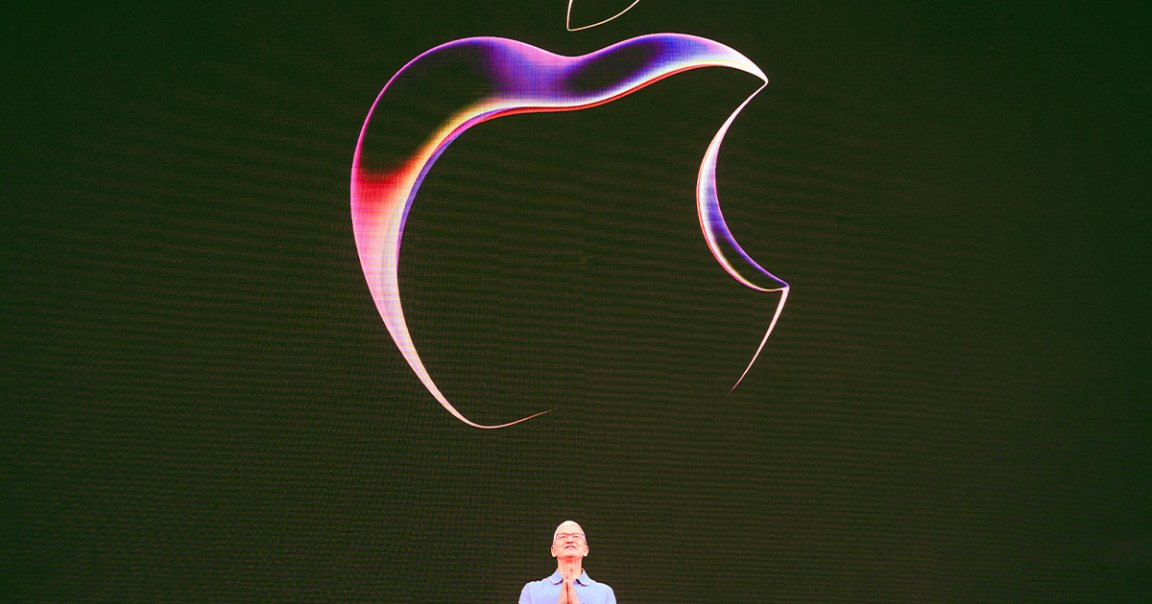
After a decade of troubled development, Apple finally gave up on its effort to build a high tech car — a secret project codenamed Titan — earlier this week, shifting focus to generative AI.
Now, a new report from The New York Times gives us a glimpse of the chaos behind the scenes of this doomed venture, in what’s a damning portrait of the company’s management and a case in point of the challenges faced in developing autonomous cars.
Per the report, Apple’s car project was repeatedly “scrapped and rebooted” as the company’s leadership battled over its direction, which was an ever-shifting hodgepodge of building a self-driving electric vehicle to rival Tesla or Google’s Waymo. In doing so, they burned a lot of money: more than $10 billion, according to NYT — all that for no final product.
“When it started, it was aligning the stars on something Apple alone could hit a home run on,” Bryant Walker Smith, an associate professor at the schools of law and engineering at the University of South Carolina, told NYT. “A decade later, the stars have realigned to make this a lot of risk and not a lot of gain.”
Self-driving cars were all the rage when the project kicked off in 2014. Software engineers were confident that autonomous driving was a problem that could be solved — something that seems decidedly less certain now. According to the NYT, the brains at Apple were itching to start on their next project, so CEO Tim Cook greenlit Titan in part “to prevent an exodus of engineers to Tesla.”
In fact, NYT sources said the company briefly flirted with the idea of outright acquiring Tesla, holding several discussions with the automaker’s co-founder and CEO Elon Musk. Of course, that never materialized. Flush with cash that helped bring in top talent and with over 2,000 employees on the project, Apple figured it’d be better off going its own way.
Some of its ideas, though, were a little too ambitious. Even at its cheapest, the car would have probably sold for no less than $100,000. One concept, which was designed to look like a European minivan, came without a steering wheel and would be controlled by talking to Siri. Anyone with an iPhone that uses the virtual assistant can tell you that sounds like a nightmare.
That kooky idea was scrapped by 2016, when Apple would prioritize building self-driving software rather than a whole car. Even with these tamped-down ambitions, the project continued to falter. It was dealt another heavy blow in 2019, as Apple laid off over 200 employees working on the project. It also underwent a change in leadership, which again shifted the focus back to building an entire car, deepening the chaos. In 2022, it fully ditched autonomous driving.
Fast forward to this February, and Apple finally decided to bite the bullet and end the hamstrung project. Its failure might be as much of a symptom of the company’s vacillating vision as the difficulty of perfecting self-driving tech. Not even the field’s leaders, such as Tesla and especially General Motors’ suspended Cruise division, have released finished autonomous systems, and both have been the center of controversy over the safety of their technology.
Nevertheless, Apple seems to think there’s a silver lining. Per NYT, it plans to use what it’s learned about AI and automation and put it towards its now prioritized generative AI efforts, mimicking the rest of the tech industry. But perhaps it’s merely heading down another dead end, hopping from the last fruitless trend to another, as generative AI seems more and more like a bubble.
More on Apple: We Talked to the Guy Who Wore a Vision Pro VR Headset at His Wedding